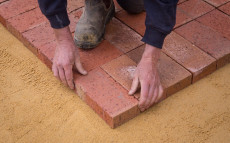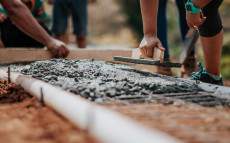- pathfindersAI
- Job Profile
Tapers
Summary
What They Do
A Taper, often referred to as a Drywall Taper or Finisher, plays an indispensable role in the process of constructing and renovating buildings. These skilled tradespeople specialize in preparing wallboard surfaces for painting or finishing by ensuring that seams, joints, and any irregularities are smooth and flawless. The primary responsibility of a Taper is to apply adhesive tape over the seams between panels of wallboard, following which they distribute joint compound over the tape to create a seamless surface. This preparation is crucial for achieving a polished and professional appearance in both residential and commercial construction projects.
Job Responsibilities
Tapers bear a multitude of specialized responsibilities that set the foundation for successful interior finishing. They begin by examining wall surfaces to identify any gaps or imperfections that require attention. Once identified, they measure, cut, and fit the tape to cover all seams adequately. This is followed by the meticulous application of joint compound, which is smoothed with a knife or spreader. Multiple layers of compound may be required, each meticulously sanded down between applications to ensure an even surface. Tapers also manage the repair of minor surface defects on existing drywall and may texture or otherwise condition the wall to meet specific aesthetic requirements. Additionally, Tapers are responsible for maintaining their tools and equipment, adhering to safety protocols, and often collaborating with other tradespeople on construction sites to ensure seamless project progress.
Essential Skills
To excel as a Taper, an individual must possess a unique set of skills that combine both physical dexterity and technical precision. Hand-eye coordination is critical, as the work demands precise and steady application of tape and compound. Manual dexterity and steady hands are vital to avoid any imperfections during the smoothing and sanding processes. Strong attention to detail ensures that all seams and joints are flawlessly covered, avoiding future issues. Tapers must also be able to read blueprints and construction plans to understand the project requirements. Physical stamina and strength are necessary to maneuver around construction sites and handle the demands of repetitive motion tasks. Additionally, good communication skills are essential for coordinating with other construction professionals and addressing any project concerns effectively.
Educational Pathways
Becoming a proficient Taper typically entails a combination of formal education and hands-on training. Most individuals pursuing this career embark on it through apprenticeships, where they gain practical experience under the supervision of seasoned professionals. These apprenticeships allow them to learn the intricacies of the trade, from basic taping techniques to advanced finishing methods. While a high school diploma or equivalent is often sufficient for entry, many aspiring Tapers benefit from enrolling in vocational or technical schools that offer courses in construction, drywall installation, and finishing. Certification programs, often provided by trade organizations or technical schools, can also enhance a Taper's credentials and employability, demonstrating their commitment to mastering the craft.
Career Prospects
The career prospects for Tapers are promising, given the ongoing demand for new construction and renovation projects. As residential, commercial, and infrastructure projects continue to rise, so does the need for skilled Tapers to ensure high-quality finishes. Tapers may find employment with construction firms, drywall contractors, or as independent contractors offering specialized services. The job market is relatively stable, with opportunities varying by region based on local construction activity. Experienced Tapers who excel in their craft can advance to supervisory roles, train apprentices, or even establish their own contracting businesses, providing room for both professional growth and financial fulfillment.
Conclusion
In conclusion, the role of a Taper is integral to the construction and finishing of interior spaces, serving as the final touch to creating aesthetically pleasing and structurally sound environments. Through their meticulous work, they ensure that walls and ceilings meet the highest standards of quality. Tapers require a blend of technical skills, physical ability, and attention to detail, all of which are developed through a combination of education and hands-on experience. With promising career prospects and opportunities for advancement, pursuing a career as a Taper can be both rewarding and sustainable for those dedicated to mastering this essential trade.
Video
Compensation
| State | Median Salary | Median Hourly | Positions |
|---|---|---|---|
| AZ | 52,570 | 25.28 | 1,240 |
| CA | 68,840 | 33.10 | 3,980 |
| CO | 64,950 | 31.23 | 300 |
| CT | 84,100 | 40.43 | 270 |
| HI | 94,160 | 45.27 | 230 |
| ID | 43,870 | 21.09 | 130 |
| IL | 103,600 | 49.81 | 420 |
| IN | 47,410 | 22.79 | 170 |
| ME | 52,790 | 25.38 | 40 |
| MA | 97,310 | 46.78 | 430 |
| MI | 66,150 | 31.80 | 100 |
| MN | 83,380 | 40.09 | 300 |
| MO | 78,750 | 37.86 | 210 |
| NV | 55,660 | 26.76 | 980 |
| NJ | 92,260 | 44.35 | 50 |
| NY | 52,000 | 25.00 | 2,720 |
| NC | 34,330 | 16.50 | 30 |
| ND | 77,790 | 37.40 | 80 |
| OH | 66,120 | 31.79 | 70 |
| OR | 88,250 | 42.43 | 490 |
| PA | 79,470 | 38.21 | 90 |
| TX | 45,620 | 21.93 | 310 |
| UT | 54,440 | 26.17 | 450 |
| WA | 67,200 | 32.31 | 2,010 |
| WI | 61,510 | 29.57 | 80 |
Similar Occupations
In this area you will find other occupations that are close to the one you were viewing in tasks, knowledge and work environment. If the primary job profile you are viewing isn't quite to your liking, take a look around and see what else is available.
Basic and Premium Accounts have more alternative occupations available than the Free account.

Brickmasons and Blockmasons - 47-2021.00
Brickmasons and Blockmasons construct and repair walls, floors, partitions, and other structures with brick, concrete blocks, and other masonry materials. They interpret blueprints, measure and cut materials, and apply mortar or adhesives to create sturdy, aesthetically pleasing surfaces.
-
$59,640/yr
Median Pay -
56,830
Number of Jobs

Cement Masons and Concrete Finishers - 47-2051.00
Cement Masons and Concrete Finishers prepare, pour, and finish concrete surfaces such as floors, sidewalks, roads, and curbs, ensuring they are smooth, level, and properly textured. They use a variety of tools and techniques to achieve the desired finish and may also repair and restore damaged concrete structures.
-
$50,720/yr
Median Pay -
203,560
Number of Jobs